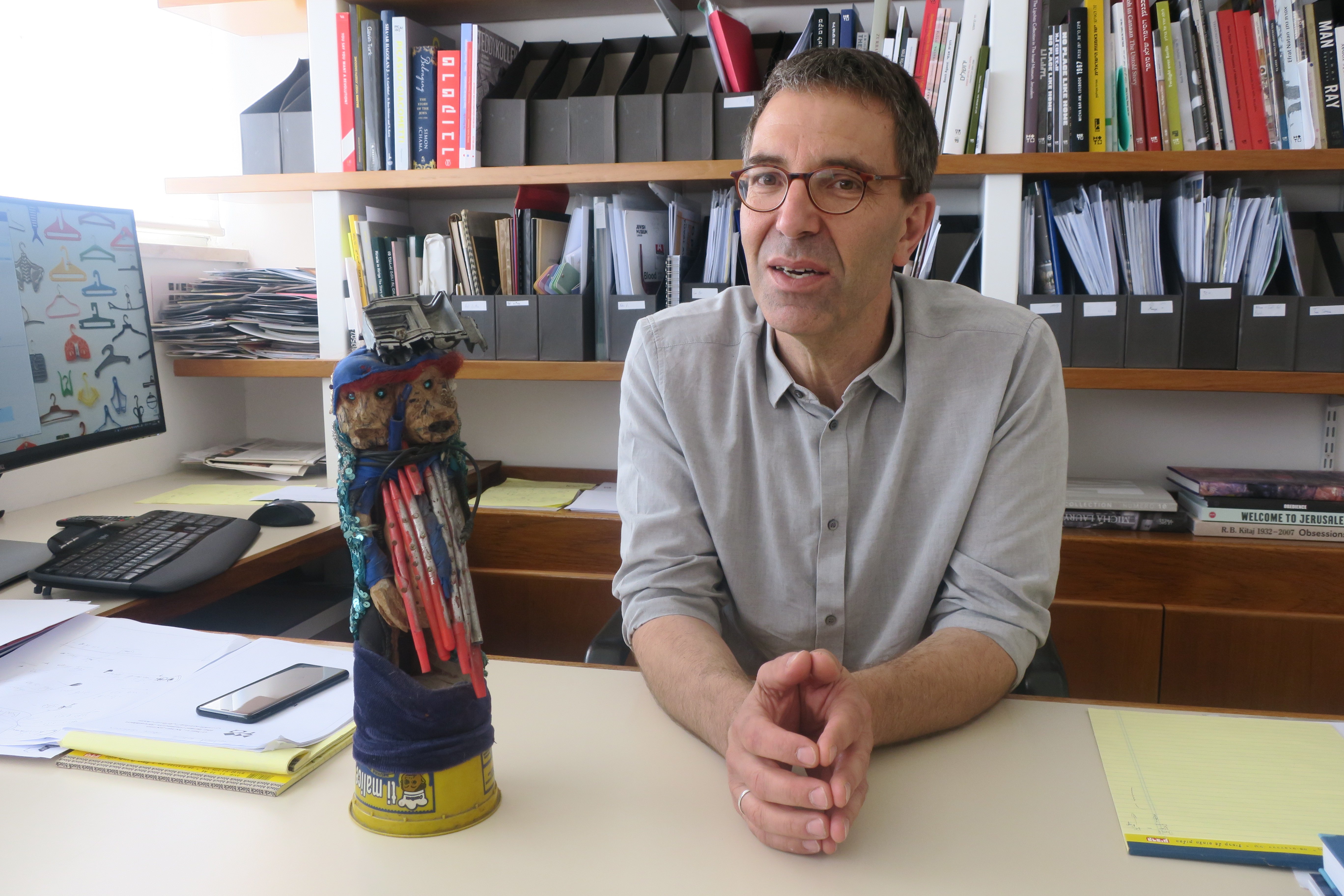
Every Monday morning, artnet News brings you The Gray Market. The column decodes important stories from the previous week—and offers unparalleled insight into the inner workings of the art industry in the process.
Since breaking news coverage overrode time normally set aside for this column, one item will have to tide us over until next week…
WEIRD SCIENCE
On Monday, writer Menachem Wecker profiled Ido Bruno, who was named director of Jerusalem’s Israel Museum last November, despite having no professional management experience in an arts or natural history institution. Prior to his current post, Bruno spent 25 years as a designer—a profession that, unlike in the US, requires what Wecker terms a “Renaissance-man approach” to solving a wide variety of problems, not hyper-specialization in a narrow sub-genre of the field (such as automotive or industrial design).
Although Bruno first turned down the Israel Museum’s job offer due to his nontraditional background, he later reversed his decision after becoming convinced that the institution “really wants to renew itself… and look ahead.” Among other novel initiatives, one of his main aims is to forge a stronger philanthropic bond with Israel’s tech sector, which has historically preferred to direct its giving toward educational and civic causes rather than cultural ones, according to Bruno.
He is seeking to leverage technology from the museum’s side as well. Wecker mentions Bruno’s intent to lean into online crowdfunding, perhaps even by using Kickstarter campaigns to target granular goals like the conservation of specific objects in the collection. He also talks about harnessing smartphone synergies through apps that could teach visitors about works on view, provide a “virtual tour” of similar pieces in storage, or even recommend related merchandise available in the museum store. (I suspect he’s already reviewed some of the more compelling apps in the museum landscape, like those developed by SFMOMA, the Detroit Institute of Arts, and the Cleveland Museum of Art.)
Bruno calls his own hiring “an experiment”—and it isn’t just his professional background that justifies the label. From these examples, it sounds like his directorship will be defined, for better or worse, by acting like an administrative Large Hadron Collider, blasting outsider ideas into traditionalist ones to see what new things might emerge from the impact—hopefully without blowing himself up in the process.
How will it play out? I have no idea. But I’ll be watching because the types of change Bruno wants to bring in aren’t the types propelled by the momentum of galvanizing social progress. They’re the types weighted down by the lead vest of wonkery.
What I mean is this: Bruno is not talking about, say, eliminating the blatant historical disparities in the number of exhibitions by artists of color versus white artists, or creating a safe and inclusive work environment for women and gender-nonconforming people—two causes that, at least here in the US, now seem to receive broad support from most members of the art world, including several key figures with the power to directly and meaningfully address those concerns.
A fashion exhibition at the Israel Museum. Photo: Menachem Wecker.
(To be clear, I’m not saying those types of goals aren’t on Bruno’s radar. Nor am I going to pretend that I understand the internal politics of Jerusalem well enough to say how they might affect his ability to implement those shifts, even if he wanted to prioritize them. I’m strictly relaying the focus of the piece.)
Instead, Bruno spoke to Wecker about rethinking core tenets of the way museums function on the levels of business operations and visitor experience. These are definitely not the kinds of causes that rally art lovers around them with the promise of bending history’s arc toward justice. Expecting that would be like expecting huge numbers of people to take to the streets in full-throated passion for the sake of improved trash collection or campaign finance reform.
It’s not that these issues aren’t important. Like a lot of other important issues, they’re just boring. If, as the old political adage goes, you campaign in poetry and govern in prose, it’s possible that Bruno’s priorities involve doing something like administrating in textbook copy.
However, these types of problems are only boring until one of the proposed new solutions does something that annoys people. For instance, remember the backlash when the Met changed the wording on its ticketing signs from “suggested admission” to “recommended admission”? It produced enough bad blood to fill the elevators in The Shining—and a ghastly lawsuit that forced the museum to reassess its course three years later. I’m already shuddering at what happens if an interactive Israel Museum app starts serving up ads for merch while visitors are trying to view works in an exhibition. I’d rather have Jack Nicholson chase me with a hatchet through the halls of a snowbound hotel than contend with the reaction.
This is why I don’t envy Bruno—and also why I’m rooting for him. Museum-store ads aside, the kinds of ideas we most need in the arts are the ones that a large (or at least powerful) portion of people least wants to hear about. Here’s hoping he really does have enough institutional backing to take some risks that pay off early and quickly fade into the background, as so much good governance does.
That’s all for this week. ‘Til next time, remember: Saying you want to change is a lot easier than actually changing.